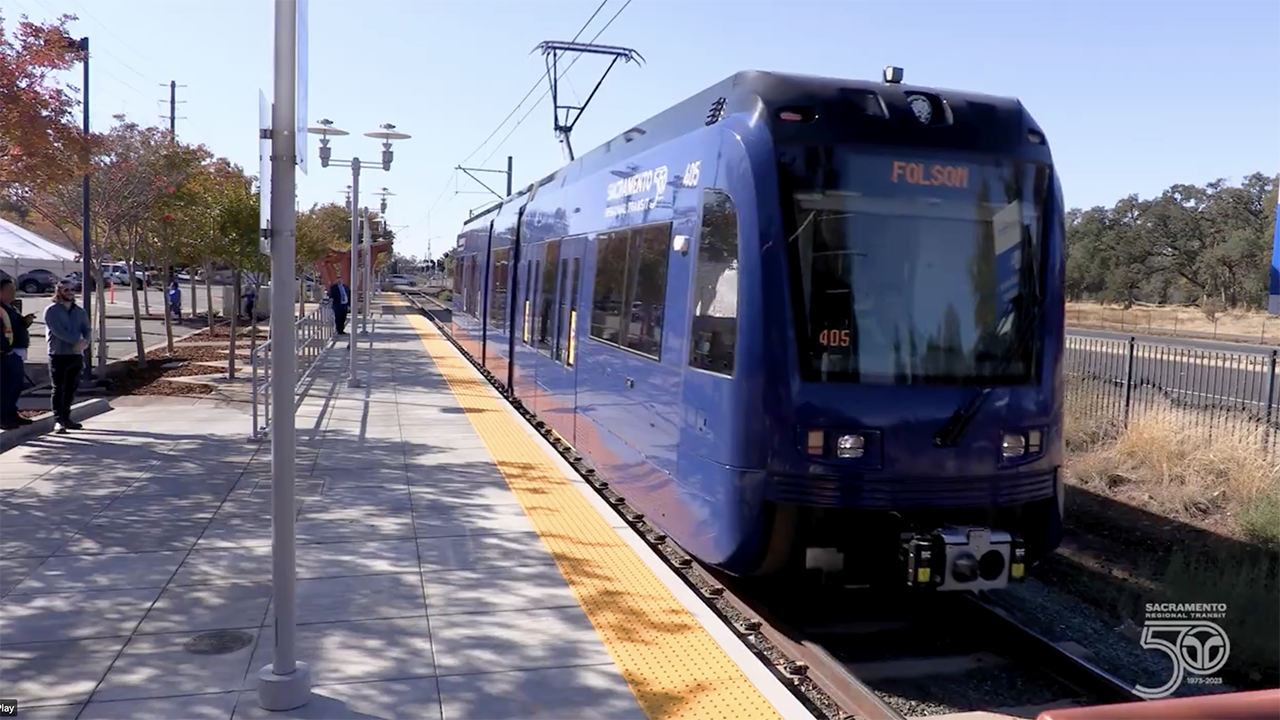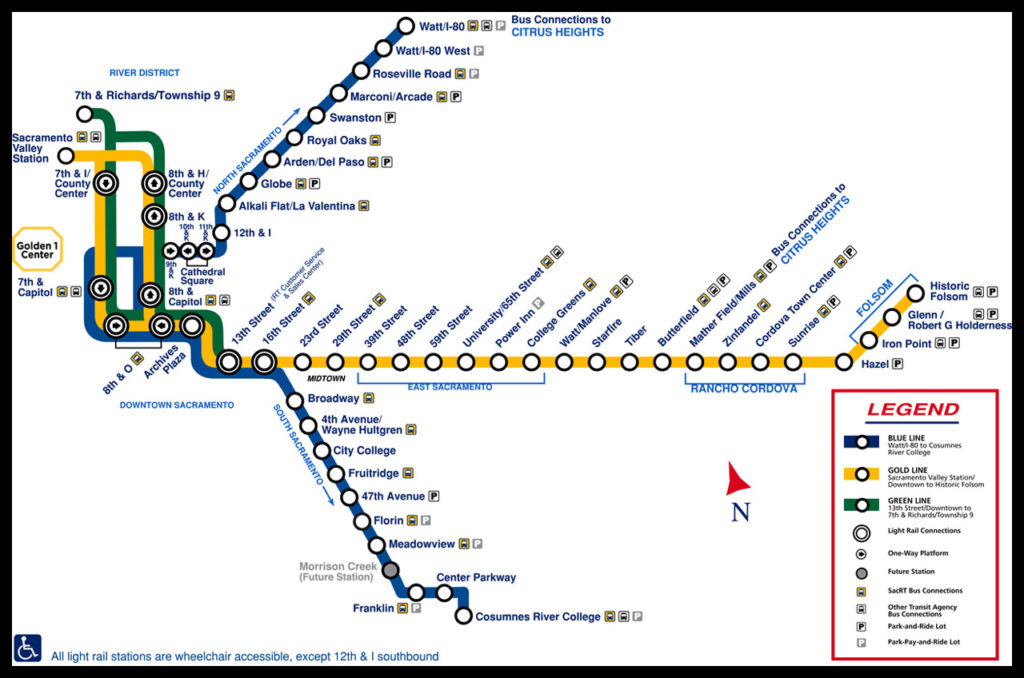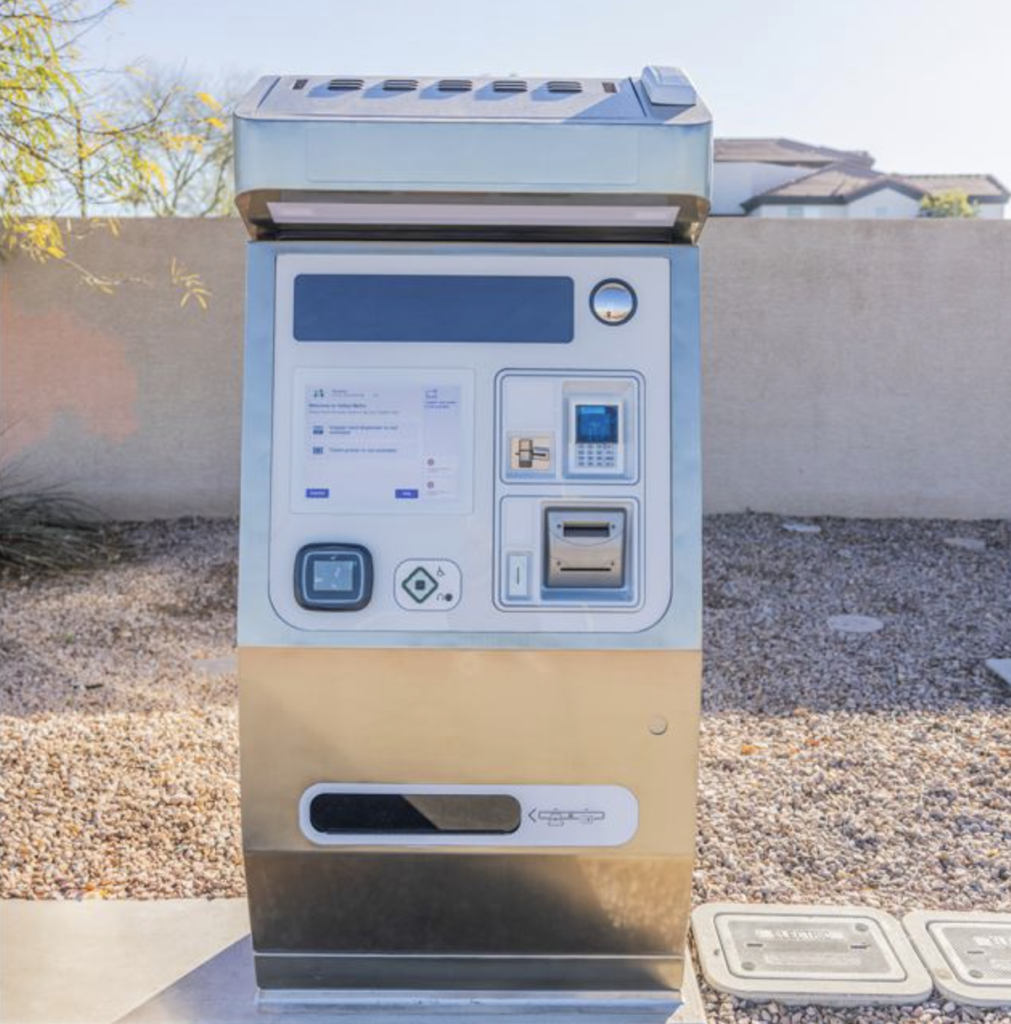
Transit Briefs: SacRT, TTC, Phoenix Valley Metro, Colorado General Assembly
Written by Marybeth Luczak, Executive Editor
“As we continue to prioritize the enhancement of our transit system, I am thrilled to announce the purchase of nine additional new low floor light rail vehicles,” SacRT General Manager/CEO Henry Li said March 19. “By investing in these state-of-the-art trains, we are not only elevating the transit experience for our riders but also reinforcing our dedication to a sustainable future for the Sacramento region.” (Screen Grab from SacRT social media video post, courtesy of SacRT)
Sacramento Regional Transit District (SacRT) in California is exercising an option with Siemens Mobility for more LRVs (light rail vehicles). Also, Canada’s three biggest transit agencies, including the Toronto Transit Commission (TTC), are urging the federal government to advance the next wave of transit funding; Valley Metro in Phoenix, Ariz., is installing new fare machines; and the Colorado General Assembly aims to leverage millions in federal infrastructure funding to bring passenger rail service to the state.
SacRT
SacRT is exercising an option with Siemens Mobility for nine additional S700 low-floor LRVs for its 43-mile, 53-station system, bringing the total number on order to 45.

SacRT initially awarded Siemens a 20-car contract in 2020, which included an option for up to 76 more, to replace older cars that had reached the end of their useful life. Siemens had previously provided 36 U2A vehicles in the late 1980s. In 2021, SacRT ordered eight more Siemens S700s; and last fall, it ordered an additional eight.
According to SacRT, the new S700s have at-platform boarding at every door and allow riders with mobility devices to board using a deployable ramp at the two center doors instead of using a mini-high ramp. Also, each LRV features four dedicated wheelchair locations.
The new low-floor cars are part of SacRT’s Light Rail Modernization Project, which includes station modifications to accommodate them and the addition of a passing track to provide 15-minute service to Folsom-area stations.
Siemens has already delivered the initial 20 S700s to SacRT’s light rail facility in north Sacramento, where they are undergoing testing. They are expected to begin entering service on the Gold and Green lines this summer. The Blue Line will continue to operate the current high-floor LRVs, which still require riders with mobility devices and those unable to climb stairs to use the mini-high ramps at the ends of the station platforms. SacRT said it will begin construction on Blue Line station platforms to meet the height requirements of the new LRVs in late 2024; construction is slated for completion by 2027.
“By investing in these state-of-the-art trains, we are not only elevating the transit experience for our riders but also reinforcing our dedication to a sustainable future for the Sacramento region,” SacRT General Manager/CEO Henry Li said.
“Bringing SacRT’s fleet of S700 LRVs to 45 new low floor vehicles is an exciting feat that highlights our dedication to the region,” said Michael Cahill, President, Rolling Stock at Siemens Mobility North America. “These American-made trains built right here in Sacramento by our team of more than 2,500 will help to elevate rail travel in our community.”
TTC
Chief executives from Toronto’s, Montreal’s, and Metro Vancouver’s transit agencies are appealing to the Canadian federal government to launch the Permanent Transit Fund two years ahead of schedule “to help them address growing pressures on their systems,” TTC reported March 19.
In a joint Federal Budget Submission (see above), TTC, Société de transport de Montréal (STM), and TransLink called on Ottawa to “advance the commitment of funding under the new federal Permanent Transit Fund by early 2024, instead of 2026, to enable critical projects and programs to advance and support long term capital planning,” according to TTC.
The three agencies outlined the “significant challenges they face due to aging infrastructure, an outdated funding model that relies on regressive sources such as transit fares and property taxes, and the exceptional ridership growth forecasted for the coming decades,” TTC reported. “With approximately 2.35 million new residents expected before 2050 in the three cities, immediate and sustained investment in transit operations, state of good repair and building capacity is essential to prepare for this growth.”
TTC said the submission also requests that the government “permanently double the Canadian Communities Building Fund (CCBF) as a proven predictable funding stream for municipal infrastructure needs, and establish a forum for ongoing tri-partite engagement with all orders of government on the development of a sustainable, long-term funding model for public transit that considers the full capital and operating costs of providing high quality transit services.”
If the government fails to deliver new funding for urban transit systems in the 2024/2025 budget, the transit agencies warn that “it will put in jeopardy new transit-oriented developments and reduce access to affordable housing that all three cities are working to deliver with their provincial and federal government partners,” according to TTC.
TTC reported that in 2022 the three transit agencies:
- Generated approximately 60% of Canada’s transit ridership.
- Enabled mobility at the center of the regions that are home to one out of every three Canadians.
- Served the core of regional economies that generated 40% of Canada’s national GDP.
Valley Metro

Valley Metro on April 1 will begin installing new fare machines at its 46 light rail stations as part of the Fare Technology Modernization project. The project in 2024 will allow riders to purchase a fare on a mobile device or through a reloadable fare card, and scan or tap that fare on new fare readers throughout the system. Both options will be an account-based system in which riders can add funds, track transaction history, and view account balances, for example.

Once installed, the new machines will be covered and not in operation until later this year, according to Valley Metro. Every station will have at least one existing machine in service that riders will be able to use until the new system is fully implemented.
Colorado General Assembly
Colorado Senate President Steve Fenberg (D-Boulder) and House Speaker Julie McCluskie (D-Dillon) on March 19 introduced legislation (SB24-184) that aims to leverage millions in federal infrastructure funding to bring passenger rail service to and expand public transportation options across the state.
The bill, which is also sponsored by Colorado Sen. Janice Marchman (D-Loveland) and Rep. Andrew Boesenecker (D-Fort Collins), would implement a congestion reduction fee that the legislators said “would be used to offset climate impacts and mitigate the congestion, and wear and tear on Colorado’s roads caused by rental vehicles.” Proceeds from the fee, they explained, would create a “sustainable funding source to be used as a matching source for federal investment opportunities for statewide transit and rail, as well as other forms of public transportation.”
The bill would encourage Denver Regional Transportation District, Front Range Passenger Rail, and Colorado Department of Transportation (CDOT) to coordinate efforts to secure the funding needed to establish passenger rail service from Denver to Fort Collins, while exploring near-term opportunities to fund regional transit and rail projects along the Front Range and up to the mountains, according to the legislators. It would also direct the Colorado Transportation Investment Office to use three studies in the near term to fund “regionally important transit and rail services originating from the Front Range Passenger Rail Service Development Plan, the Mountain Corridor Service Development Plan, and the Statewide Connectivity study that aims to build a more comprehensive statewide bus system,” they reported.
Lastly, the legislators said the bill encourages CDOT to consider public-private partnerships and other “innovative funding structures” throughout the state to fund a “full suite of multimodal infrastructure projects, including bus and passenger rail,” and would require a new, multimodal strategic capital plan that aligns with CDOT’s 10-year plan, statewide transit plans, greenhouse gas pollution reduction goals, and other greenhouse gas reduction priorities and pollution reduction planning standards.
SB24-184 will be heard by the Colorado Senate Transportation & Energy Committee in the coming weeks. Track the bill’s progress here.



